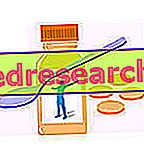Edited by Antonio Rubbino
Regulation of the energy balance
In 1995, Kaiyala's study brought to light early evidence of regulation of food consumption by activating certain neuronal circuits. Going forward in time various hormonal signals were discovered which influence human feeding patterns. Now you will be the only one who does not know the word "leptin" ; by now he is like a ghost that wanders in many of the speeches among bodybuilders.
Not much is known about this Leptin or, at least, few focus on studying it and understanding it and not many are aware of the importance this hormone has on our psycho-physical state.
Regulation of caloric balance
The 1999 Schwarts and Baskin study sheds light on how the central nervous system controls the consumption of food through two effector pathways (the effector nerves command the performance of a specific task following a stimulus received from the outside or from the inside, an example is the neuromotive plates that stimulate muscle contraction).
Some neuropeptides and monoamines synthesized and released through nerve pathways are able to modify, once they reach the brain, the consumption of food and the choice of the type of food.
The two effector ways we can indicate them as:
- "anabolic effector system"
- "catabolic effector system"
Anabolic effector system
As it defines the word itself, "anabolic" indicates the ability to group small molecules into larger units, therefore, the energy storage capacity.
The anabolic effector system inhibits:
- SNS activity (sympathetic nervous system)
- the activity of the SNS in the BAT (brown adipose tissue) therefore inhibits the optional thermogenesis that brings a certain energy loss only in the form of heat
This inhibition of the SNS implies:
- stimulation of LPL activity (lipoprotein lipase) responsible for the storage of fat in fat cells
- therefore, lipogenesis
- increased production and release of insulin
- increase in production and release of glucocorticoids (cortisol and its pro-hormones)
Therefore this effector system stimulates only and elusively the conservation of excess energy, almost completely inhibiting the caloric dissipation (inhibiting thermogenesis, as said before, the loss of the caloric surplus is blocked through the production of body heat).
For the moment I will not treat the "proponents" of the activation of this neuronal pathway, but be aware that prolonged fasting, weight loss, type 1 diabetes (hence also the prolonged lack of glucose) lead to the activation of this nerve pathway and prepare the body for the storage of the caloric surplus and increase the "need for food".
Catabolic effector system
As you can imagine this system works in a totally opposite way to the catabolic one. The anabolic effector system inhibits:
- LPL, then lipogenesis
- muscle and fat insulin sensitivity, therefore stimulates proteolysis and decreases glucose consumption
- Production and release of insulin
stimulates:
- HSL (hormone sensitive lipase) which stimulates fat oxidation, and therefore lipolysis
- The activity of the SNS, therefore the release of adrenaline, noradrenaline and dopamine
- Activation of BAT, hence energy expenditure through thermogenesis
- Decreases glucocorticoid production.
In summary: it is the system of "hunting and escape", it involves the preservation of muscular glycogen to maximize high-intensity activities, blocks proteolysis (protein catabolism) and increases the production of energy derived from fat. This is the system that, during our ancestral evolution, allowed us to overcome long periods of fasting during which physical activity (hunting, harvesting, escape) was very intense; to refer to some of my previous articles, this system is the one that is activated during a ketogenic diet, when there is a strong lack of glucose, but not prolonged for too long.
Some clarification before moving on to even more boring speeches
The two effector systems do not function as watertight compartments, if one is activated it does not mean that the other is completely deactivated. An example is physical activity; the training activates the catabolic effector system during the workout, but once finished and having consumed a meal we will have the activation of the anabolic effector system, with slight variations that I am not now dealing with otherwise I will dwell too long.
The two systems work in synergy in order to allow preservation and optimization of the use of assimilated energy. Extremization, therefore the preponderance of one over the other system occurs only in certain situations such as prolonged fasting, overtraining, disease states, severely restricted carbohydrate diets, prolonged calorie deficit and other extreme circumstances.



